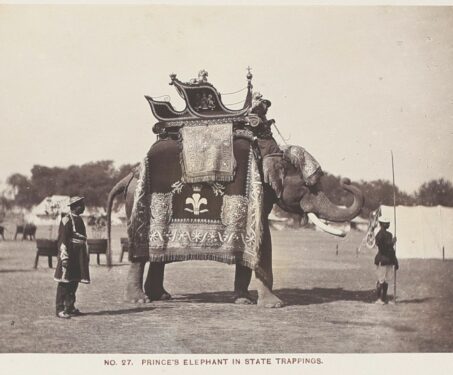

Object of the week: Behind-the-scenes of a royal Indian tour
By ship, by yacht, by elephant and by camel. We follow the heir to Queen Victoria on an elaborate tour of India in 1875

By ship, by yacht, by elephant and by camel. We follow the heir to Queen Victoria on an elaborate tour of India in 1875
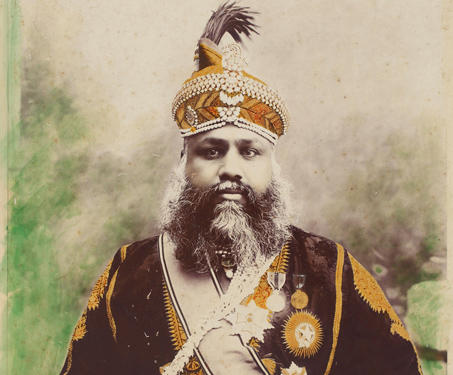
Sawai Madho Singh II (1862-1922) was the adoptive son of Ram Singh II, Maharaja of Jaipur. On 30 September 1880, at the age of twenty, he ascended the throne of Jaipur. This is a hand-painted photograph of the Maharaja photographed by Gobindram and Oodeyram, preeminent photographers in Jaipur in the 1880s. The late 19th century… Read more »
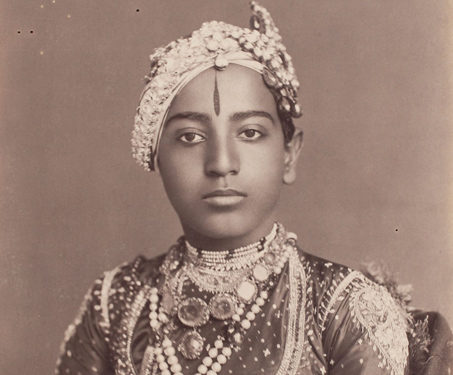
This is a portrait of an unidentified prince of Rewa, an important princely state in Central India, second only to Gwalior. Rulers in the Indian Subcontinent were typically chosen from the ranks of warrior nobility and given legitimacy by a council of ministers and nobility. Kingship was often hereditary and princes—and, less frequently, princesses born… Read more »
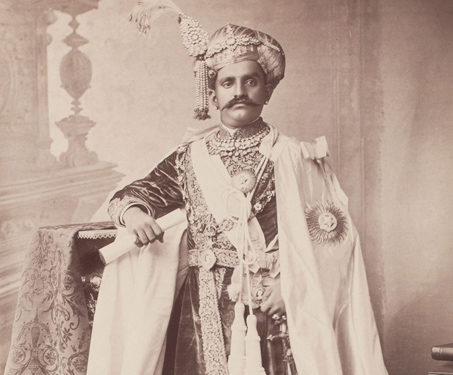
Wadiyars served as vassals of the Vijayanagara rulers but as that empire weakened in the 16th century, the they asserted their dominance as independent kings. After the final Anglo-Mysore war ( 1798–99) ended the era of Tipu Sultan, Mysore was returned to the Wadiyars to rule as a subsidiary to the East India Company. Chamarajendra… Read more »
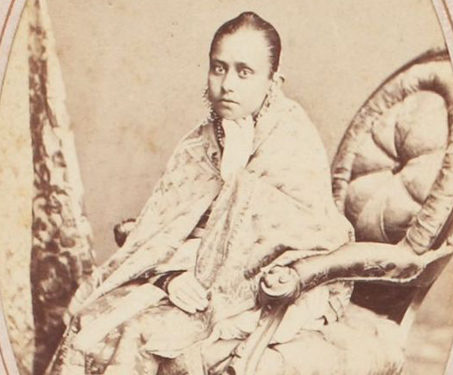
This is a Carte de Visite portrait of the Begum of Bhopal, Shah Jahan Begum (1838-1901). The state of Bhopal was unique in Indian history for being ruled exclusively by women for over a hundred years. Their line began with the 19-year-old widow of the second Nawab of Bhopal, Qudsia Begum. A remarkable matriarch, Qudsia fought… Read more »
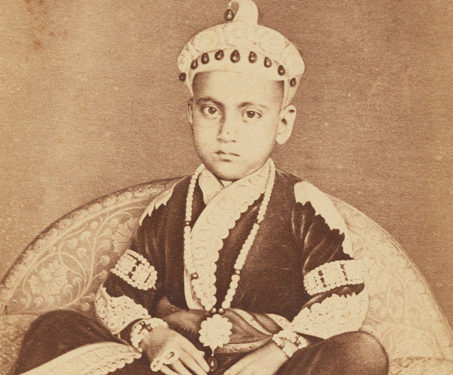
This is a Carte de Visite portrait of the sixth Nizam, Asaf Jah VI Mir Mahboob Ali Khan Siddiqi, who reigned from 1869 to 1911. During this time, he developed the railways and established cotton and silk mills in the State. In popular culture, Mahboob Ali Khan is probably best remembered for his legendary collection of gemstones,… Read more »
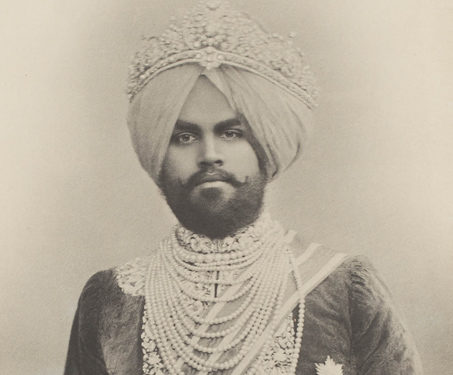
This is a portrait of Jagatjit Singh, Maharaja of Kapurthala from the album Delhi Coronation Durbar, 1st January 1903 by Wiele and Klein. Jagatjit Singh (1872-1949) carried his royal Sikh heritage with pride. He was the descendant of Sardar Jassa Singh, founder of the Ahluwalia dynasty, who led the various misls or ancestral warrior clans… Read more »
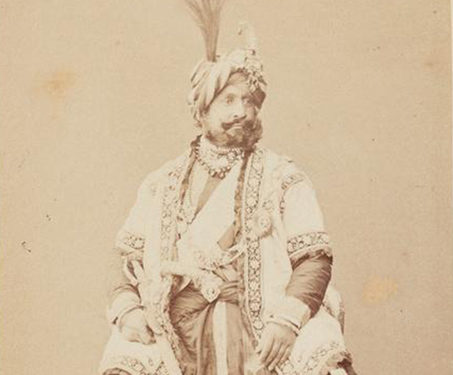
This is a Carte de Visite portrait of the Maharaja of Jammu and Kashmir, Ranbir Singh (1830-1885). After the decline of the Mughals, power over Jammu was seized briefly by the Afghan Durrani dynasty who were defeated in the early 19th-century by the armies of the Lion of Punjab aka Ranjit Singh, the first Maharaja… Read more »
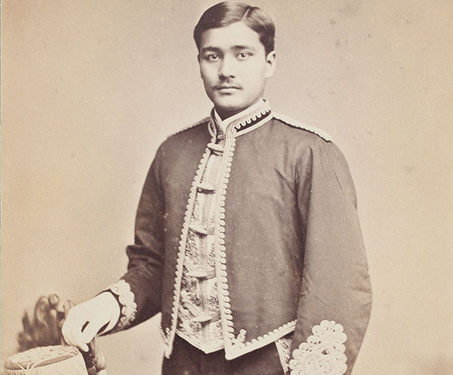
This is a portrait of Maharaja of Cooch Behar (present-day West Bengal), Nripendra Narayan (1862-1911). Bounded in the north by Bhutan, Cooch Behar was once a part of the ancient Indian kingdom of Kamarupa. Two centuries later, the East India Company would recognise the location as strategic to their imperial ambitions in Bengal and ally… Read more »
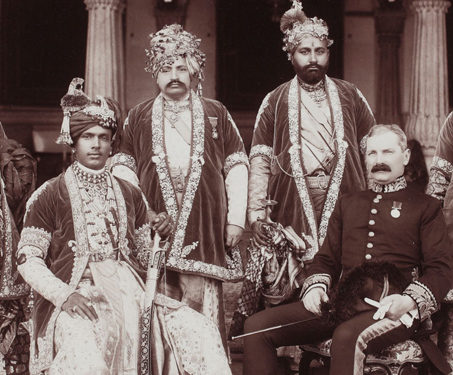
This is a photograph taken by Bourne and Shepherd in 1903 of the Maharaja of Alwar, Jai Singh Prabhakar (1882-1937), with members of the Council and Colonel Fagan. The state of Alwar (present-day Rajasthan) was one of the princely states of the Rajputana region of British India. Founded by Rajput chief Pratap Singh in 1775,… Read more »
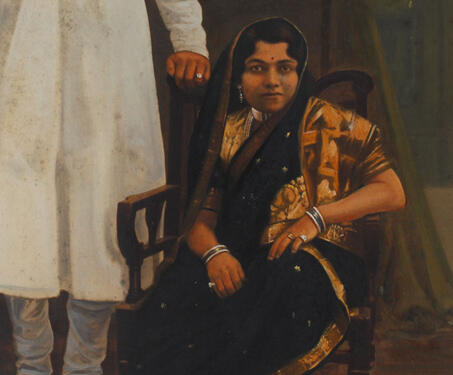
This painted portrait is identified as Udaji Rao Pawar, Maharaja of Dhar and his wife Lakshmibai. It was created in 1933. Although black and white photography rose in popularity and acquired a mark in the late 19th and early 20th centuries, Indian aristocrats sought to go a bit further to fully enjoy the medium. They… Read more »
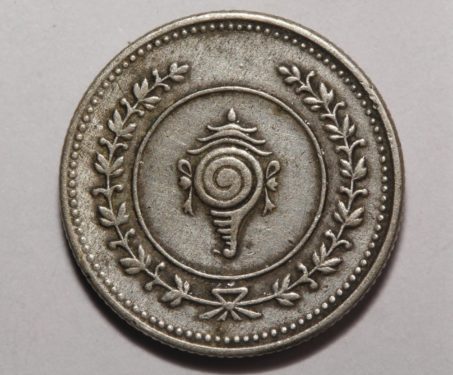
The kingdom of Travancore was a Hindu feudal kingdom till 1858 and later an Indian princely state ruled by the lankini Travancore royal family. In ancient times, the region had been ruled by the Cheras, Cholas and briefly by the Vijayanagara dynasty, until it became an independent state in the mid-18th century. The Travancore royals… Read more »
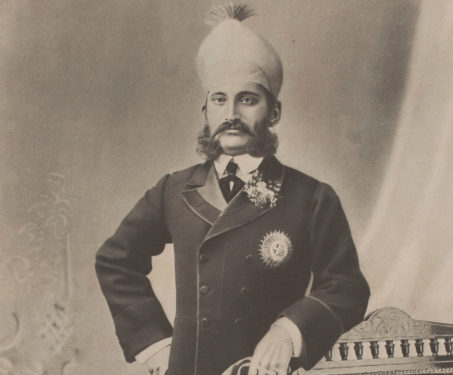
While the Nizams were alive, neither the Mughals, nor the French, nor the British, could wrest control of Hyderabad. On their watch, the city swayed to its own rhythm, breathing new life into Deccani art, music, dance and poetry
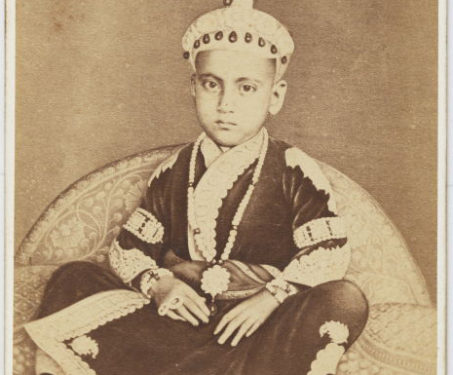
From the Nizam’s jewels to the Maharaja of Kapurthala’s Cartier headdress, we dive for gems among Sarmaya’s treasure trove of rare 19th-century photographs
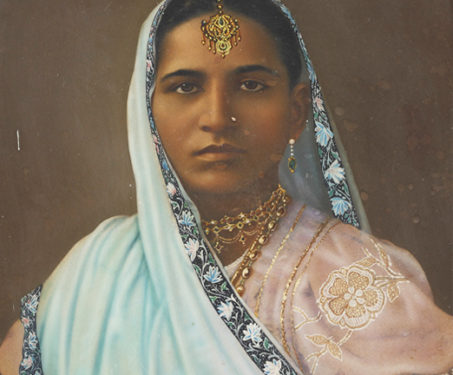
Class, caste, gender, faith, community, identity. We give away so much of who we through what we wear. Looking at 19th-century photographs and watercolour portraits from the Indian subcontinent, it might seem like our ancestors dressed more conservatively, seeking to hide everything but their social status which they wore like an armour. But we can… Read more »
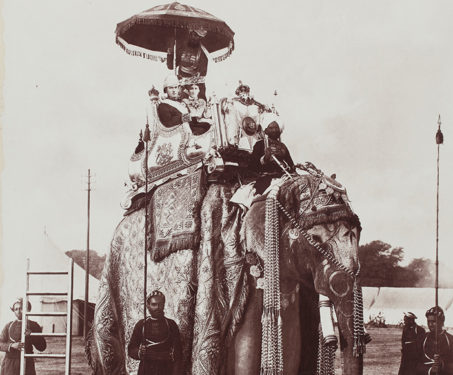
The Delhi Durbar of 1902-3 was conceived of by Lord Curzon to take place in December and January to celebrate the succession of Edward VII and Alexandra of Denmark to the throne of Emperor and Empress of India. The King and the Queen, however, did not attend the Durbar, but instead sent Prince Arthur, Duke… Read more »
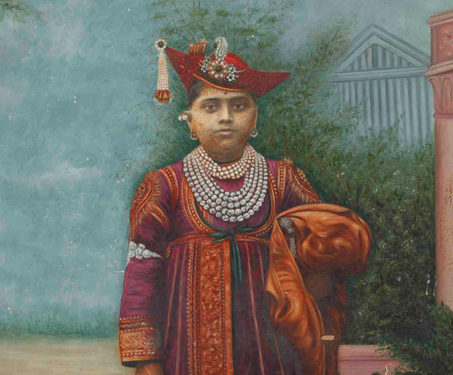
In this painted photograph of Jiwaji Rao Scindia of Gwalior (r.1925-1948), one can notice how the backdrop has been painted over the picture. Here, the setting is that of a European garden. Some rudimentary architecture is in place, but the rest of the space is left blank. Look closer at the young prince’s face, and… Read more »
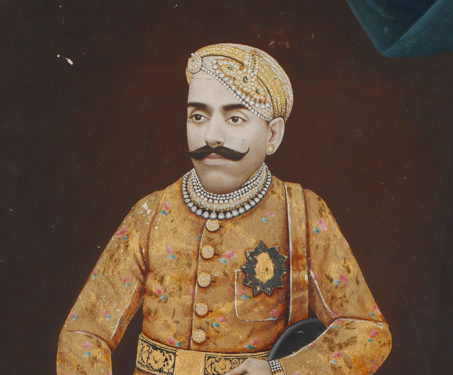
In the West, hand-painting was only used to add delicate highlights or make modest adjustments to images. But the method took a special and distinctively vivid turn in India. Indian royals were first enamoured with photography, but they quickly began to believe that there was something lacking in the images. Something of the grandeur and… Read more »
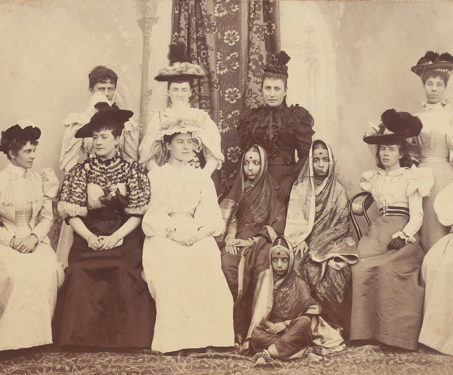
This photograph of a group of unidentified women from central India was taken by PA Herzog and P Higgins. Herzog and Higgins were two Englishmen who worked in Central India. Herzog presumably learned the art of photography in Jabalpur from John Blees, who produced an instructional manual on the subject. Both Herzog and Higgins worked… Read more »
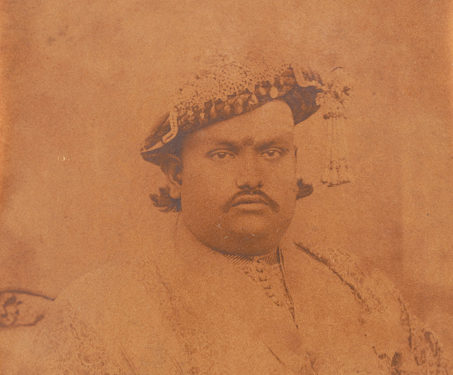
Hutwa Raj was a feudal estate belonging to the Bhumihar Brahmins of Baghochia dynasty and it was located in the Saran Division of present-day Bihar. Read about Indian kings and their fabulous jewels here. This studio portrait of the Maharaja is an albumen print mounted on a cabinet card. The front of the cabinet card… Read more »